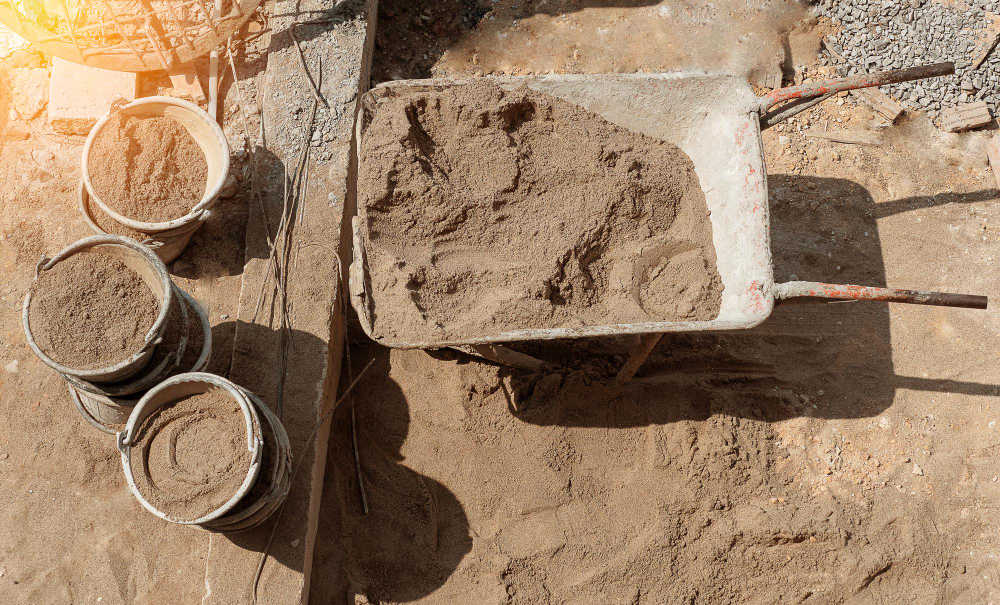
Which Sand is Best for House Construction? Complete Guide by Relgrow
Introduction
Sand is one of the most important yet often overlooked materials in house construction. From concrete beams and walls to plastering and flooring, the type of sand directly affects strength, durability, finish, and long-term stability. At Relgrow, we guide homeowners and builders in selecting the right sand for every stage of construction, ensuring cost-effectiveness, structural integrity, and eco-friendly practices. With 15+ years of expertise, we help you build homes that last decades.
What is Sand and Why It Matters?
Sand is a natural material made of tiny rock and mineral grains, acting as the “glue” in concrete and mortar. Its quality influences:
- Strength & Durability – High-quality sand ensures solid foundations and walls.
- Workability – Smooth sand improves mortar and plaster application.
- Finish & Aesthetics – Fine sand gives crack-free, smooth finishes.
- Cost Efficiency & Sustainability – Choosing the right sand avoids wastage and promotes eco-friendly construction.
Using the wrong sand can weaken structures, cause cracks, and result in costly repairs.
Types of Sand Used in Construction
1. River Sand
- Source: Naturally extracted from riverbeds.
- Texture & Colour: Fine, smooth grains; light grey or white.
- Best For: Plastering, masonry, concrete finishing.
- Pros: Smooth finish, easy to work with, minimal cracks.
- Cons: Expensive, over-mining causes environmental damage.
2. Pit Sand (Coarse Sand / Badarpur Sand)
- Source: Dug from deep pits (2–3 m).
- Texture & Colour: Angular, rough grains; reddish-orange.
- Best For: Concrete, foundations, structural masonry.
- Pros: Strong, economical, ideal for load-bearing structures.
- Cons: Requires washing to remove clay/silt, unsuitable for plastering.
3. M-Sand (Manufactured Sand)
- Source: Crushed granite, basalt, or stone.
- Texture & Colour: Angular, slightly rough; dark grey.
- Best For: Concrete, RCC, block work, paving.
- Pros: Consistent quality, stronger concrete, eco-friendly.
- Cons: Rough texture may need more cement for smooth finishes.
4. Other Types (Use with Caution)
- Sea Sand: Contains salt; weakens steel and concrete.
- Silty Sand: High silt content; weakens structures.
- Artificial/Recycled Sand: Good for non-load-bearing, eco-friendly projects.
Choosing the Best Sand for Every Construction Task
| Construction Work | Best Sand | Why? |
|---|---|---|
| Foundations & RCC Columns | M-Sand | Strong, consistent, locks well in concrete, eco-friendly |
| Brickwork & Masonry | M-Sand or Washed River Sand | Strong bonding, easy handling, crack-resistant mortar |
| Plastering (Internal & External) | Fine River Sand | Smooth texture, flawless finish, easy to spread |
| Flooring & Tiling | M-Sand or Washed River Sand | Stable base, prevents cracks, ensures even surface |
| Backfilling & Landscaping | Local Pit Sand | Cost-effective, sufficient for non-structural purposes |
Sand to Avoid: Sea sand, unwashed sand, overly fine sand.
How to Test Sand Quality
- Silt Content Test: Sand with >8% silt weakens concrete.
- Grain Shape Test: Smooth = river sand (plastering), Angular = M-Sand/pit sand (structural).
- Color Test: Grey/white = river sand, Red/orange = pit sand, Dark grey = M-Sand.
- Moisture Test: Avoid sand that sticks excessively (high clay content).
Relgrow Recommendations
- Primary Choice: M-Sand – strong, consistent, eco-friendly, ideal for concrete and structural work.
- Plastering: Fine river sand for a smooth, crack-free finish.
- Sustainability: Avoid overusing natural river sand; opt for M-Sand where possible.
Relgrow ensures your home uses the right sand for durability, safety, and cost-effectiveness.
📞 Call [Insert Number] for expert advice and material consultation for your project.
FAQs
Q1: Can M-Sand completely replace river sand?
A1: Yes, except for fine plastering, where smooth river sand is preferable.
Q2: Why should sea sand be avoided?
A2: It contains salts that corrode steel and weaken concrete.
Q3: How can I check sand quality on site?
A3: Perform silt test, moisture check, and examine grain shape and color.
Conclusion
Choosing the right sand is critical for strong, durable, and visually perfect homes. M-Sand is ideal for most construction needs today, while fine river sand is best for plastering. Avoid sea sand and unwashed sand to prevent long-term damage. With Relgrow’s expertise, you can ensure your house is built smartly, safely, and sustainably.
📞 Contact Relgrow today for a free consultation and material selection guide.
Quick Links
Interior Designers In Electronic City
Interior Designers In HSR Layout
Interior Designers In Bellandur
Interior Designers In Koramangala
Interior Designers In Indiranagar
Interior Designers In Whitefield
Interior Designers In Jayanagar
Interior Designers In Yelahanka
Interior Designers In JP Nagar
Interior Designers In Marathahalli
Interior Designers In Bannerghatta Road
Interior Designers In Hebbal
Interior Designers In BTM Layout
Interior Designers In Banaswadi
Interior Designers In Kanakapura Road
Interior Designers In Varthur
Interior Designers In KR Puram
Interior Designers In Sahakara Nagar
Interior Designers In Banashankari
Interior Designers In Rajajinagar





